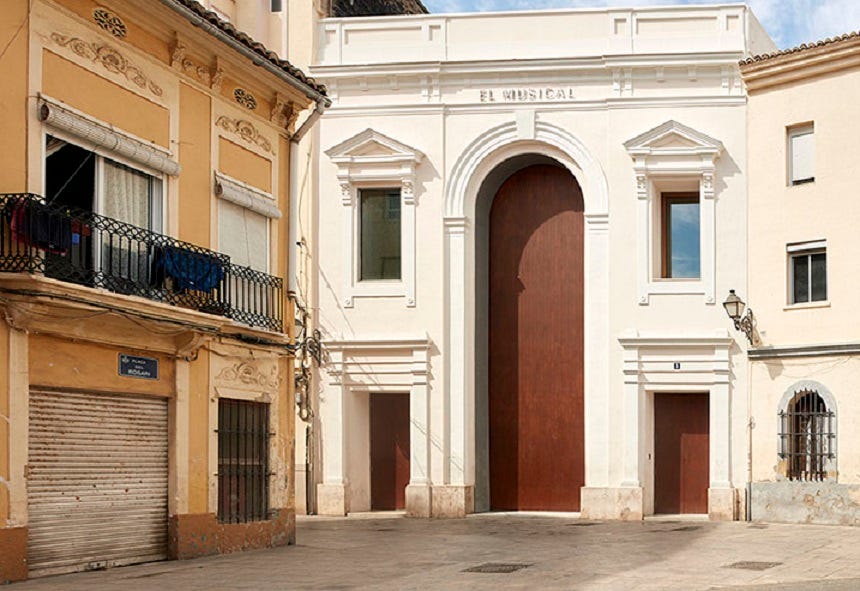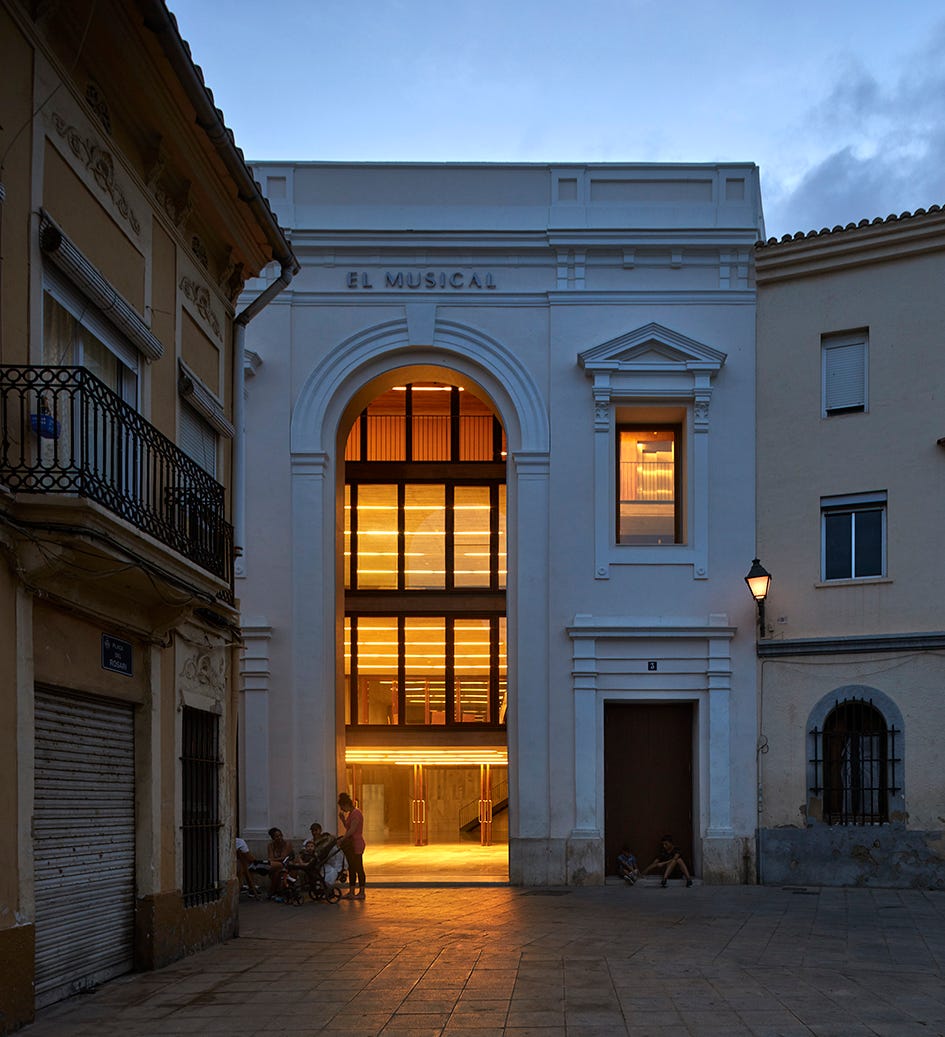Backstage in October
Music, Architecture, Politics ... how to be eclectic ("deriving ideas, style, or taste from a broad and diverse range of sources" Oxford Dict.)
This month I am listening to …
Shine you no more, by the Danish String Quartet. Music is a way to hang out with friends, they say, and this piece will make you linger a while longer.
It is a tune written by Rune Tonsgaard for their album Last Leaf:
The inspiration came after listening to a song by English renaissance composer John Downland called 'Flow my Tears'. Dowland was composer at the Danish court under King Christian IV and in this song from 1596, he uses a very nice chord progression that became the foundation for the C part of Shine You No More.
I heard this piece last year, at Echor Music’s inaugural concert in the Chilterns and it was the perfect way to connect the first part of their concert (string orchestra with Grieg, Sibelius etc) to the second part where the audience huddled around some superb folk musicians for warmth (it was October in a barn) and some different sounds.
Over the last few years, classical concert programming has become more eclectic, which is a great way to bring together a more divers audience and introduce music to listeners who might not have heard or looked into a certain genre before.
And why not become known for your unpredictability? If you look at Echor’s first year, their programming was definitely varied, from the big names in Classical Music to Chamber Music, from Folk to a Latin summer evening. And what are they up to now? A screening of Nosferatu with live orchestra performing music written by Nick Bootiman, artistic director of Echor, especially for the occasion. This is my kind of niche approach.
I am reading …
Cold enough for snow1, by Jessica Au, and I am loving her observational skills, close to a stream of consciousness, but contained within the lyrical rhythm of her sentences. It is a beautifully written, gentle description of a daughter’s visit to Japan together with her mother. Drifting around each other within the daughter’s very well planned days of visits to museums, sights and restaurants, this book is a subtle exploration not only of this mother daughter relationship but also of the narrator herself. Whilst trying to get closer to her mother again, the daughter unconsciously attempts to figure out her own place in the world.
I took out the camera now, adjusted the exposure, and fell back with my eye to the viewfinder. My mother, sensing the change in the distance between us, turned and saw what I was doing. Immediately, she assumed a stock pose: feet together, back straight, hands clasped. Is this all right, she asked me, or should I stand over there, nearer to that tree? Actually, I had wanted to catch something different, to see her face as it was during ordinary time, when she was alone with her thoughts, but I said it looked good and took the photo anyway. She asked if she should take one of me, but I said no, that we had better move on.
The book makes me think about how the relationship with my kids will change over the coming years. And having had a few mother figures in my own family when growing up, the closeness one can so easily take for granted as a child needs a lot of work (in a fulfilling way for most) when we all grow older, but I am enjoying that.
I am looking at …
I came across this concert hall, theatre and arts school in Cabanyal, a small district of Valencia, close to the port and sea promenade. El Cabanyal was the fishermen’s quarter with rows and rows of small houses, colourful, tiled, renovated, run down. There still seems to be a relatively healthy mix of locals and tourists, schools, markets and upmarket eateries next to small bodegas and the centre appears comfortably nestled within this community - as well as wanting to surprise. Check out the inside here. When the door opened the spectacular contrasts just hit me … in a good way.
I visited out of season and can’t wait to go back to listen to a concert or see a performance at the Theatre el Musical.
I am thinking about …
the UNESCO’s global report 2022 Reshaping Policies for Creativity - Addressing Culture as a global public good. It offers an overview of the state of the cultural and creative sectors and highlights recommendations to foster a creative ecosystem that can contribute to a sustainable world. Culture and creativity make up 3.1% of global GDP and 6.2% of all jobs. The export of cultural goods and services doubled in value between 2016 and 2019 to $271bn. They help build culturally-rich and cohesive communities.2 And yet, the UNESCO report states, that ….
With a few exceptions, over the last decade public investment in culture has been steadily decreasing, and this has had a strong impact on the resilience and sustainability of the cultural and creative sectors – particularly in times of crisis.
The report analyses 4 goals:
Support sustainable systems of governance for culture
Achieve a balanced flow of cultural goods and services and increase the mobility of artists and cultural professionals
Integrate culture in sustainable development frameworks
Promote human rights and fundamental freedoms
and calls governments to action, to rethink how they can build sustainable and inclusive working environments for cultural and artistic professionals who play such a vital role for society, everywhere.
And we (backstage and onstage) need to know where our counties, countries and the world are heading … we need to be informed to influence from the ground up. The report’s actionable insides are facts, not opinions, and we can work with them.
And I like …
to watch ‘Igor Levit - No Fear’, a documentary about the pianist, political and social activist. People write nearly as much about his involvement in politics as they do about his art. Levit uses the stages around the world for his music and as a platform to share his political views, sometimes subtle, sometimes very vocal.
I loved it when, a year after the disastrous Brexit referendum, at the BBC Prom opening night in 2017, the Russian-German artist played an encore of Liszt’s transcription of the Ode to Joy, also the anthem of the European Union.
Thanks for reading,
Kirsten
PS There is a lot of reading, listening, research and travel involved in my line of work; I stumble across many interesting things and ideas I can't just leave behind so I decided to write about them and share with you.
Published by Fitzcarraldo Editions
In the UK a study from 2021 shows that, in addition to the 2.1m jobs that existed in the Creative Industries prior to the pandemic, a further 1.4m roles were supported by the sector through its supply chains. In 2019, the Creative Industries directly created 2.1 million jobs, based in areas right across the UK, and directly contributed £115.9 billion to UK GDP. The creative industries made an even greater contribution when also accounting for their procurement expenditures.






